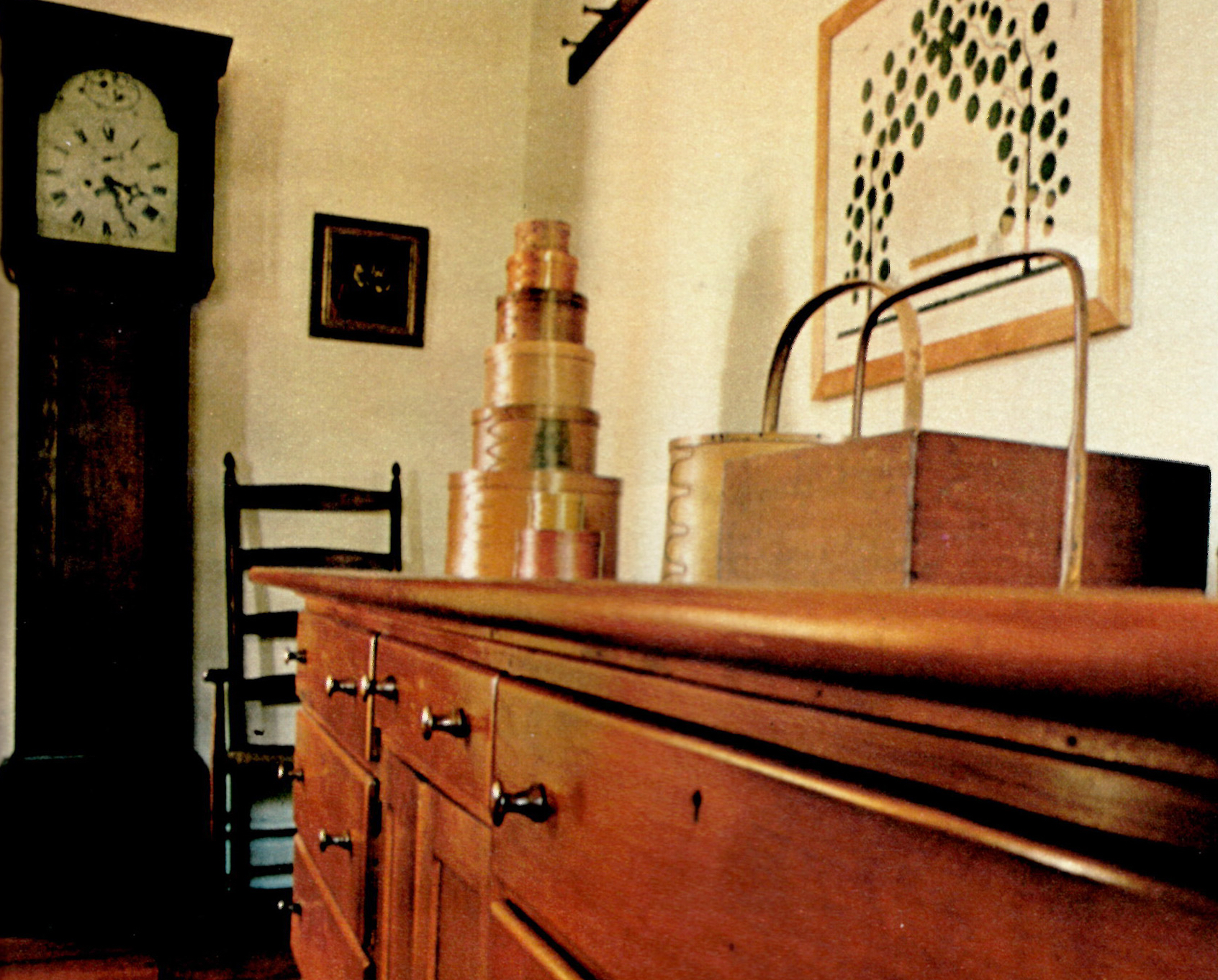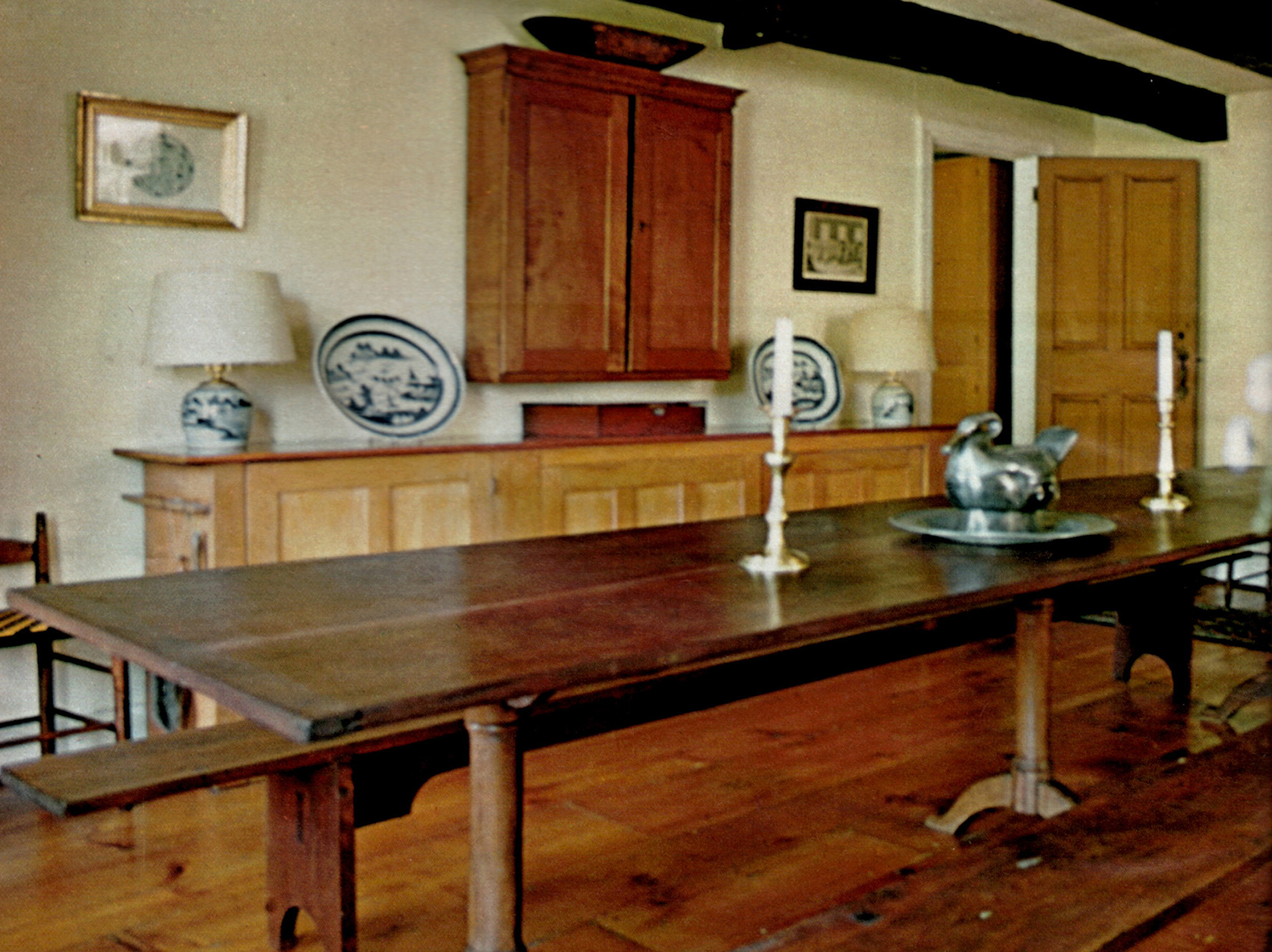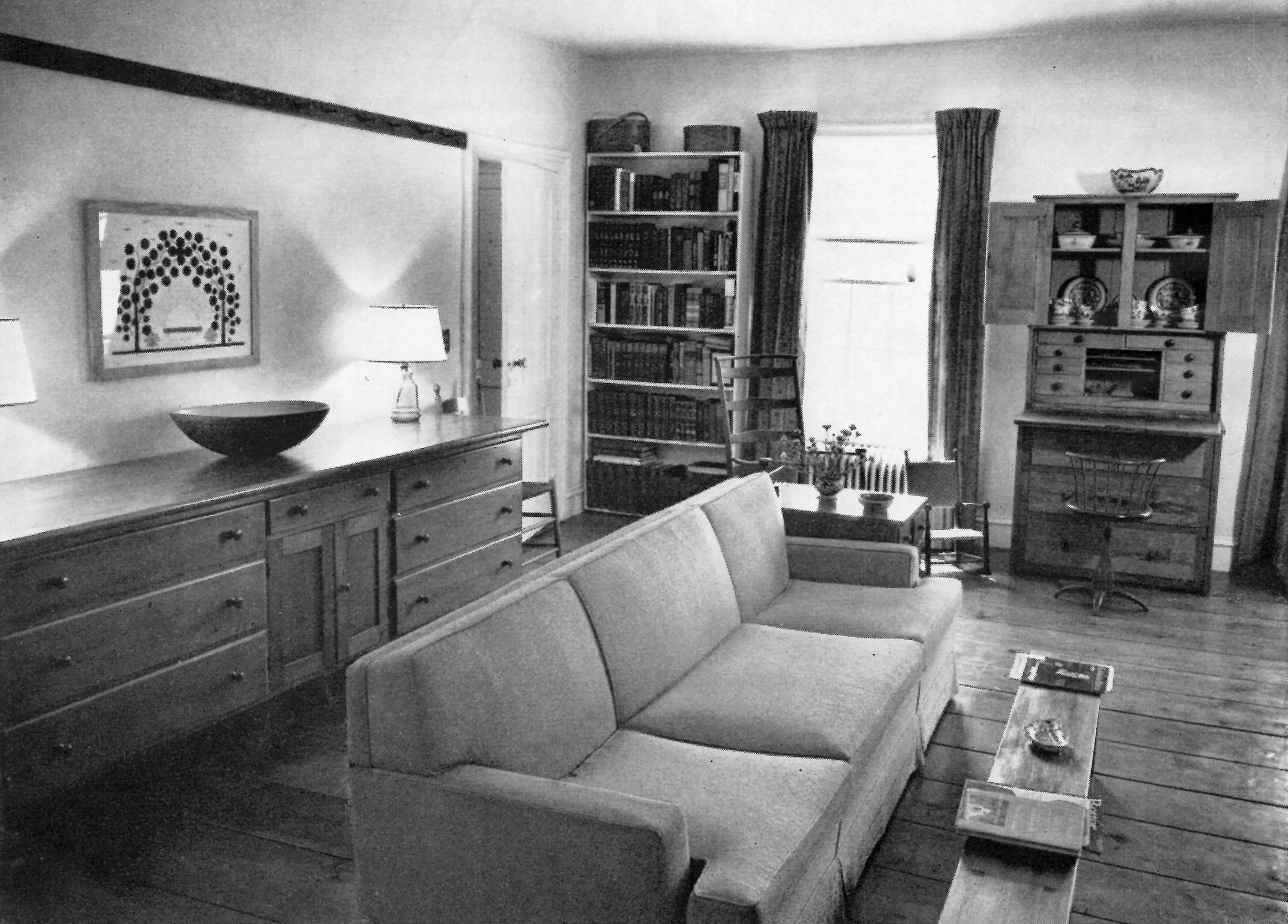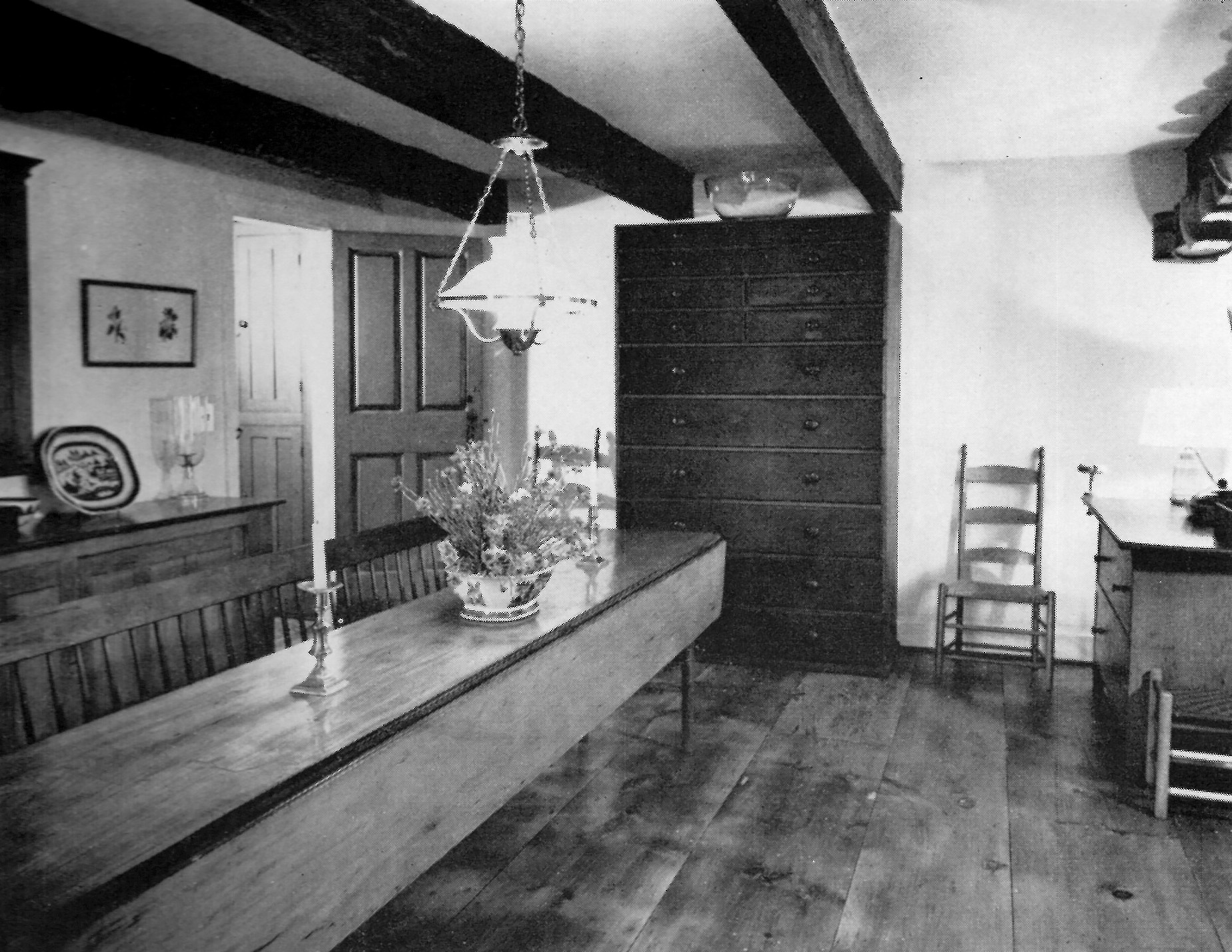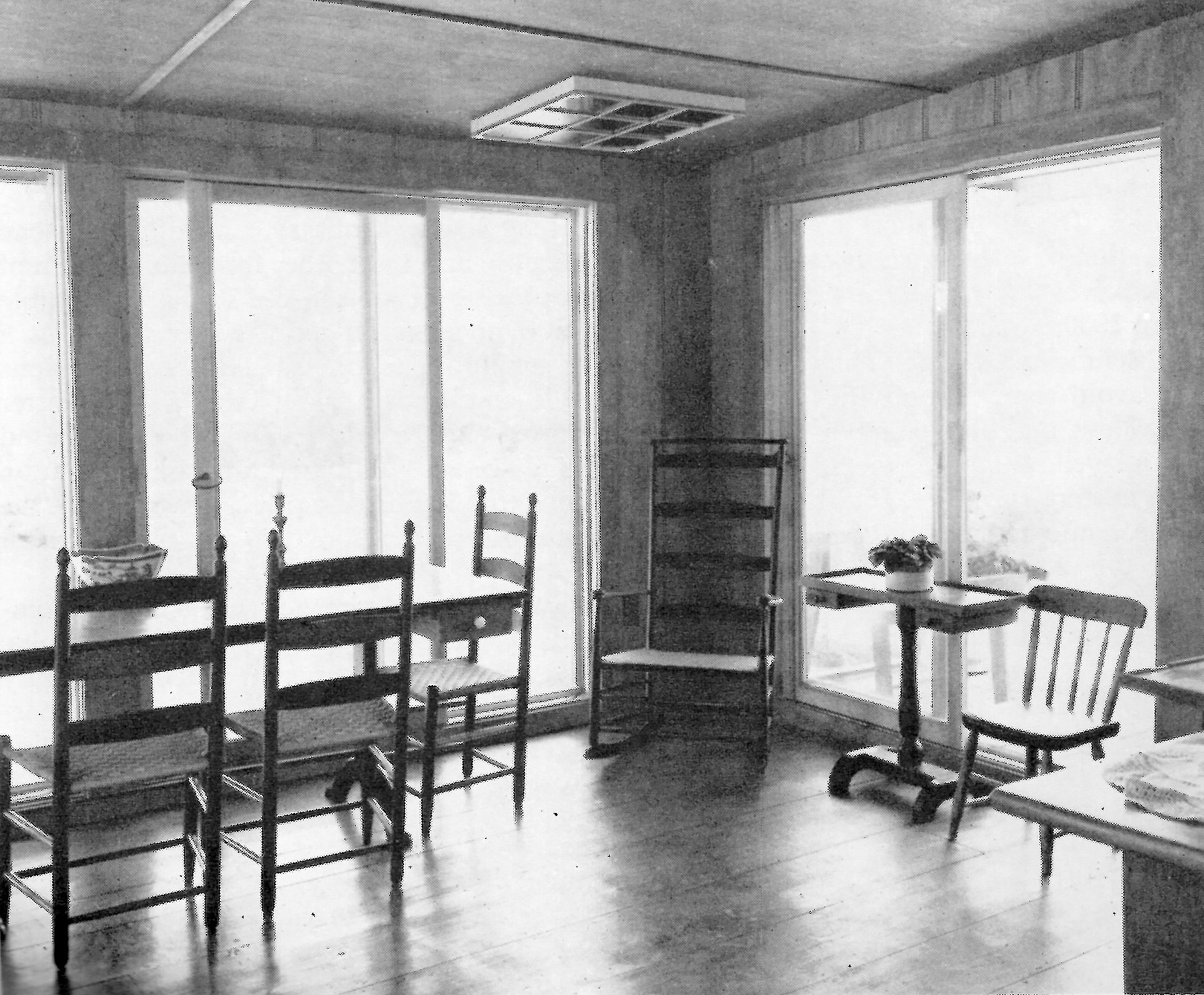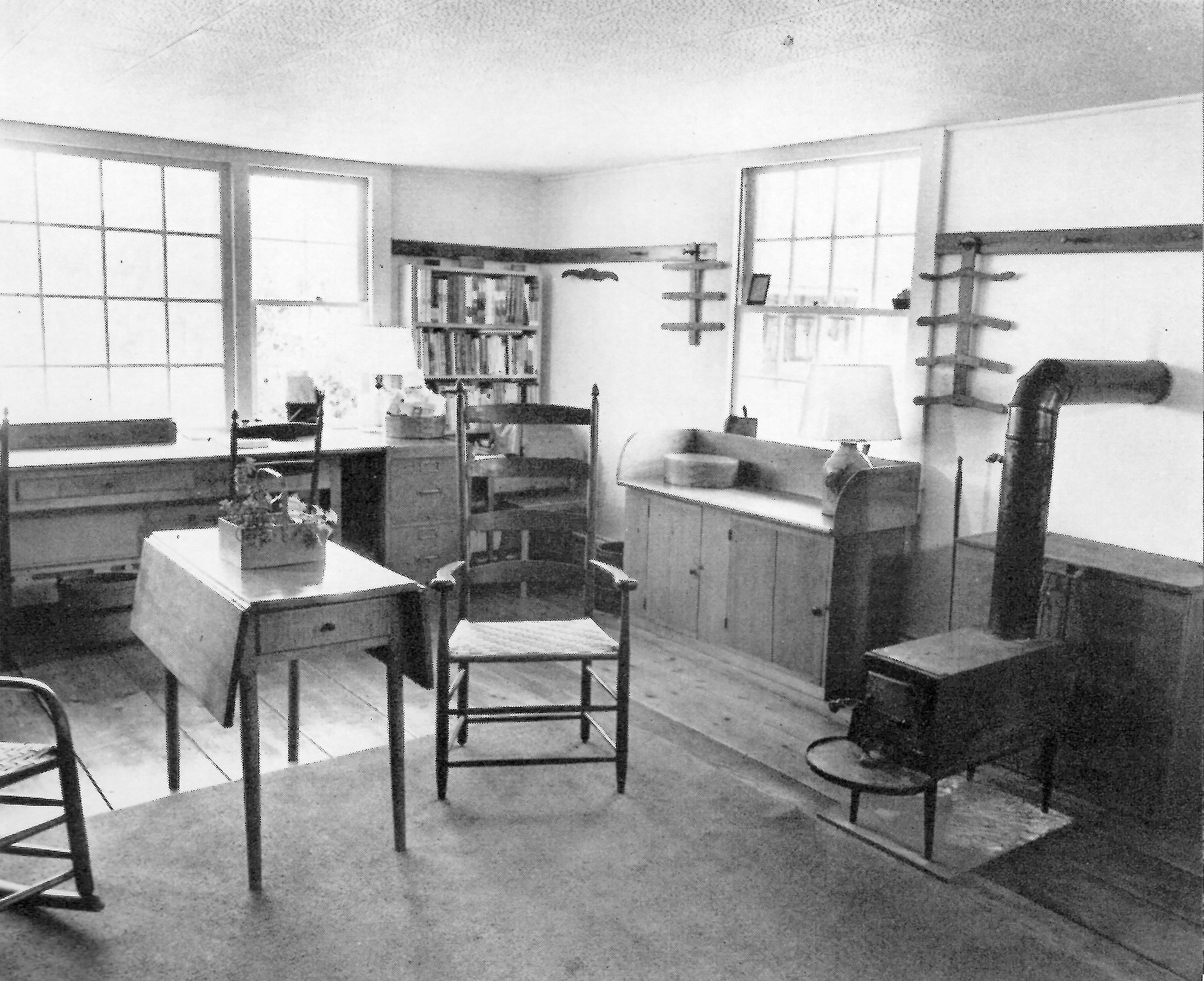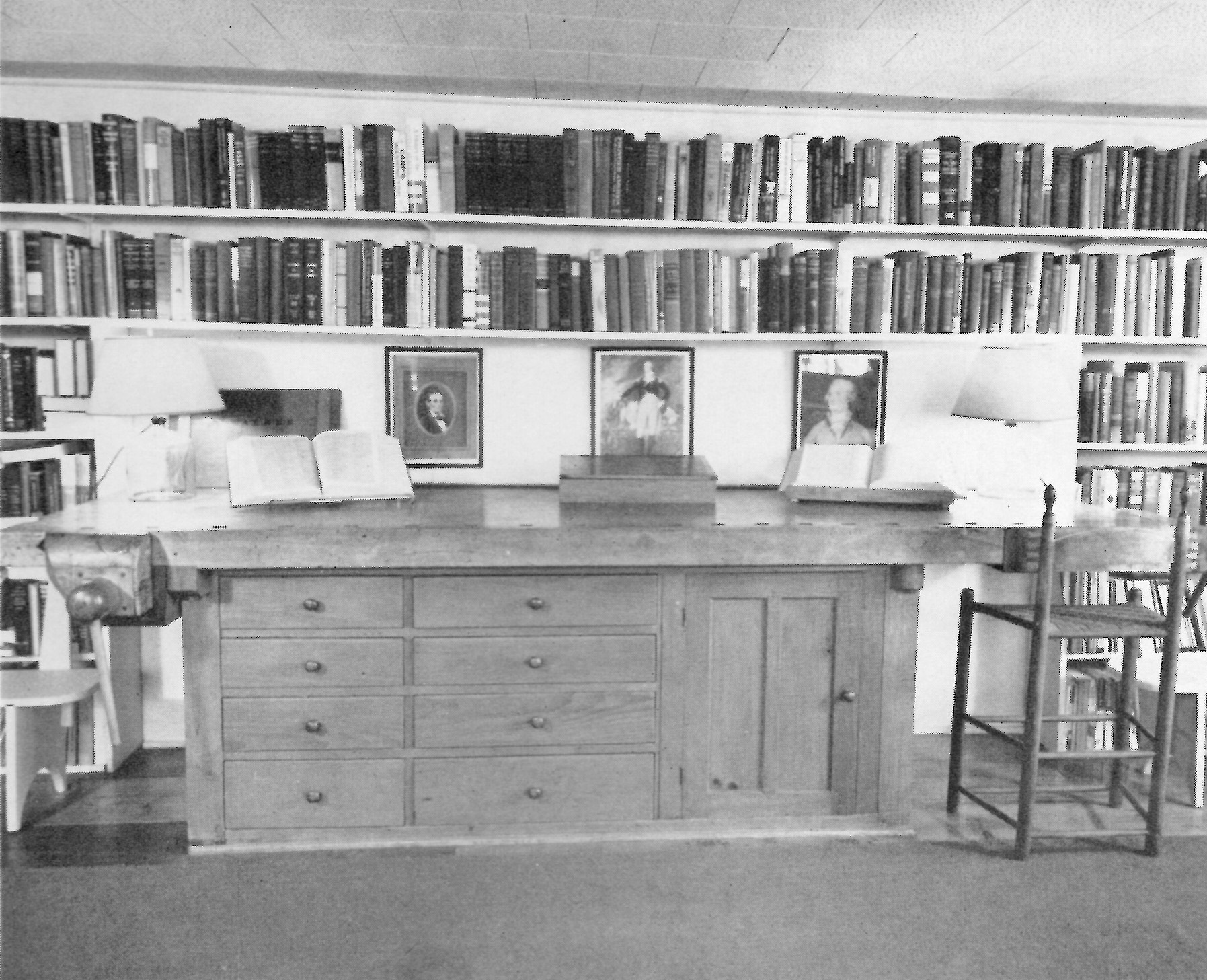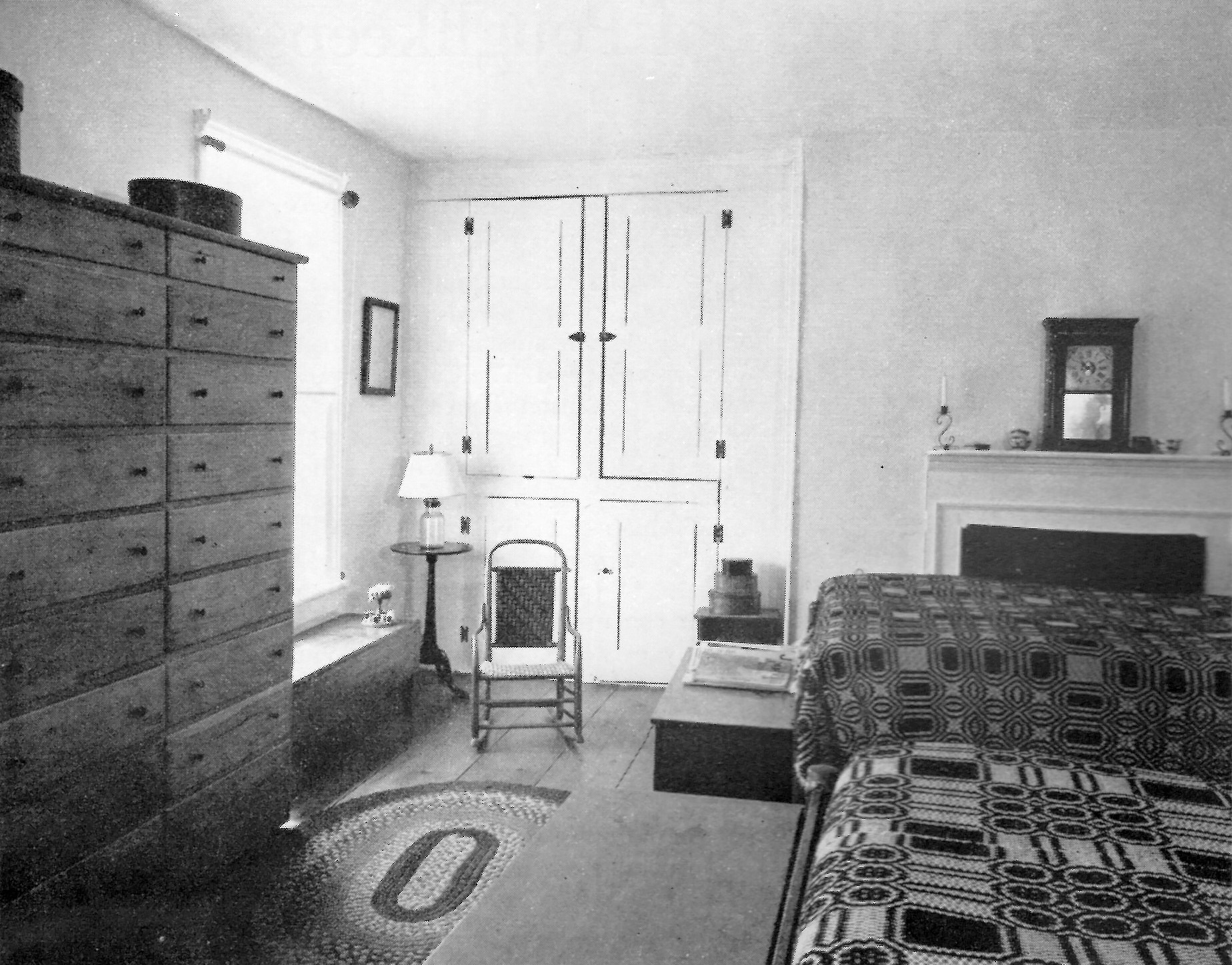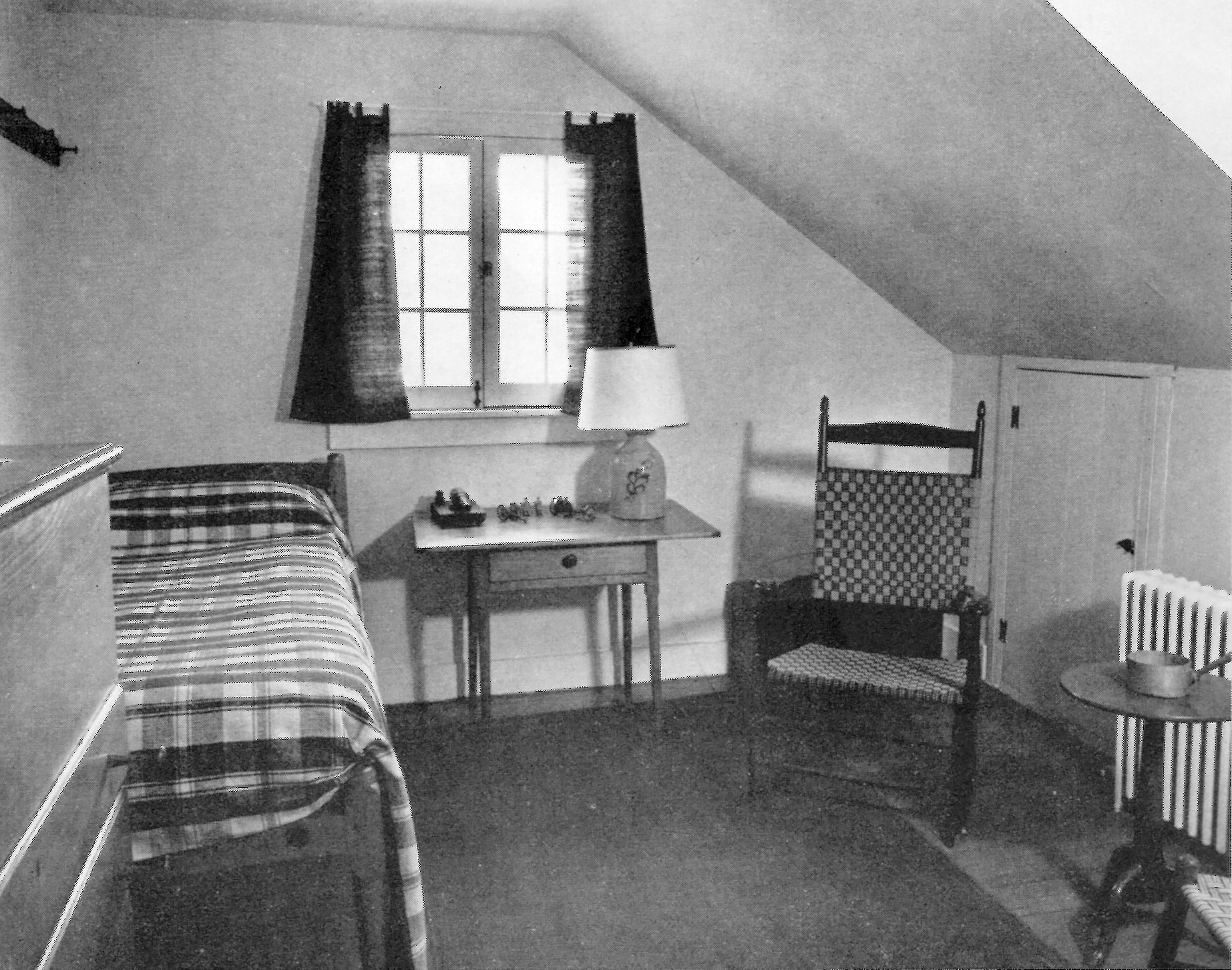Dr. Charles Williams & Helen Merritt Upton
– Troy, New York –
Charles (1905-1979) and Helen (1914-1993) Upton began collecting Shaker material in the 1950s. Both professors of American history at Russell Sage College (Troy, NY), the couple did not become interested in the Shakers as a result of their field of study—it was much later that the history and legacy captivated them as historians. Rather, the Uptons were initially drawn to the aesthetic of Shaker furniture when, in 1950, they were tasked with furnishing an early-nineteenth-century farmhouse. That fall, they attended an auction and, quite fortuitously, acquired two Mount Lebanon production rocking chairs—one black and one golden maple.

“Their color and airy frame were so flattering to our wide pine floors that it seemed they had always been a part of our household,” wrote the Uptons in Antiques. “Not only was Shaker furniture appropriate, but it had for us a deeper significance than mere utility and beauty,” they continued. “The possibility of combining history with contemporary living seemed most exciting.”
According to their son Jim, it would take almost three years for the Uptons’ “Shaker Odyssey” to fully begin. In the summer of 1953, Helen, Charles, and Jim visited Canterbury, New Hampshire, acquiring the top portion of a desk from Sister Miriam Wall (1896-1977), which Helen cited as one of their most treasured possessions. Following this initial encounter, Sister Miriam became a dear friend, and the Uptons began acquiring Shaker material and Shaker friendships in equal measure. Over time, the Uptons became close with Eldresses Emma B. King (1873-1966) and B. Lillian Phelps (1876-1973) of Canterbury, Sisters Gertrude Soule (1894-1988) and Mildred Barker (1897-1990) of Sabbathday Lake, and Eldress M. Frances Hall (1876-1957) and Brother Ricardo Belden (1868-1958). “After meeting [Shakers] and visiting their home, we began to sense the quality that pervades their lives and hence their craftsmanship,” Helen wrote. “Now we had the audacity to aspire to a whole house furnished by Shaker. Of course, it was impossible but a pleasant dream. And we kept on dreaming, because each acquisition made us more appreciative of the artistry and dedication involved.”
The Uptons acquired material through antique dealers, auctions, and other Shaker collectors—notably, Dr. Edward Deming and Faith Andrews—but many of the finest pieces in their collection came from the Shakers themselves. In 1957*, they “were first on the scene” to the demolition of the Sisters’ Shop in Hancock, Massachusetts, where they acquired wooden paneling, floorboards, doors, windows, peg rail, and even a full staircase—railing included. These salvaged architectural fragments were carefully installed in their Brunswick farmhouse. The flooring was incorporated into their summer dining room and the stairwell was reassembled in full in their front hall.
In the 1960s, the Uptons’ farmhouse was featured in two magazine spreads: Antiques in July 1966; and American Home in September 1969. In Antiques, photographer William H. Tague depicted museum-quality Shaker furniture and objects thoughtfully and beautifully integrated into the Uptons’ home. The living room featured a nine-foot Shaker tailoring counter elevated by six wooden rollers, a butternut trustees desk from Canterbury, a Mount Lebanon turning chair that came out of Watervliet, two rockers—one child’s size, and a rare four-drawer child’s chest.
Dominating the dining room was a ten-foot Shaker drop-leaf harvest table with a red top and yellow base that the Uptons acquired after it was lowered by rope from an attic window of the Hancock Trustees’ Office, (by 1969, this table had been replaced by an eleven-foot trestle table, also from Hancock). The harvest table was accompanied by a ten-foot spindle-back Enfield meetinghouse bench, a nine-foot counter used as a sideboard, and a sizable tall chest of drawers in original red paint, (an even more monumentally-sized double tall chest sits in the master bedroom, which was replaced by a cupboard over drawers by 1969).
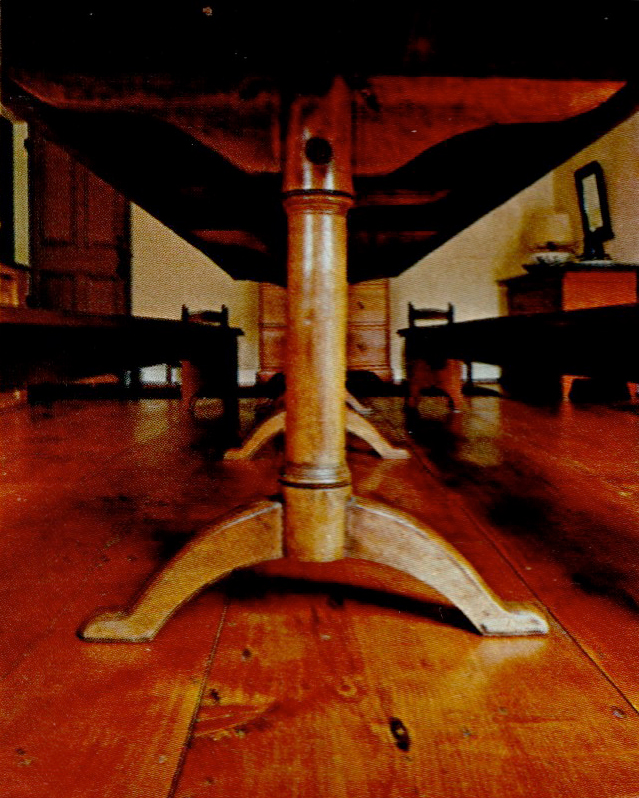
A second “informal” dining room, (the one with Shaker floorboards), contained a cherry trestle table with butternut drawers from the Ministry dining room at Hancock, and several Shaker side chairs. In the study sat a double drop-leaf laundry table, an Elder’s rocking chair, a washstand, and a cast-iron stove. The centerpiece of the space was a New Lebanon carpenters’ bench signed “C. Warner, 1864” that, in the 1950s, was sold to the Uptons out of Hancock by Eldress Frances Hall and, today, is in the collection of Shaker Museum (Chatham). Finally, the bedrooms were outfitted with Shaker beds, storage furniture—blanket boxes and tall chests, worktables, candle stands, and other items.
“During the past few years several of the Shaker sisters, including Eldress Emma B. King of the Canterbury society, have come to see us,” the Uptons wrote. “The sisters were pleased to see the furniture that was once theirs used and cherished outside their own society. One confessed that she had never slept in a Shaker bed until she came here…”
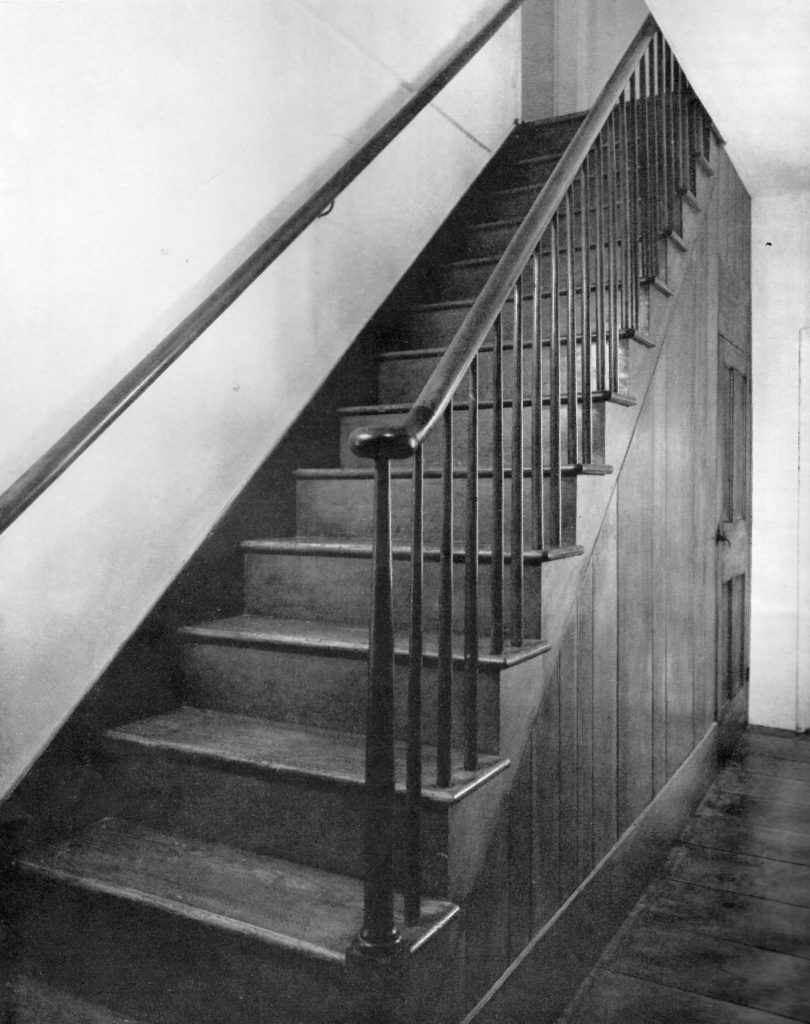
The stairway salvaged in 1957 from the Hancock Sisters’ Shop was installed in the Uptons’ hallway—a project that took seven years to complete. Indeed, materials made and used by Shakers adorn every surface of the Upton home. Rather than appearing like an ascetic museum, the farmhouse is arranged in a way that is comforting—serene, even—adapting pieces designed and made for Shaker families to accommodate the needs of a midcentury secular home.
“While many years ago we did start out to collect specifically Shaker furniture for our home,” wrote Helen Upton, “the project soon grew beyond the collection of things tangible. It became in a real sense that of gathering not only material objects of beauty and utility, but even more important, knowledge and understanding of a people and a way of life… in no way do we live in a museum — we live with Shaker. We study at the laundry table… we sit in the slanting ladder back chairs. We sleep in Shaker beds. The red-painted sewing stand is my sewing stand; a starch table is my baking center; a seed box holds silver; the stove gives us warmth in our study.”
Through the 1960s and 1970s, Charles and Helen Upton were deeply invested in the legacy of the Shakers—past and present. They researched, taught, and published on Shakerism and Shaker material culture—at Russell Sage as well as local historical societies and organizations. In early 1983, Helen appeared in the Ken Burns film, The Shakers. Her interview was one of only four gentiles in the documentary. Even their son Jim contributed research in his thesis for Union College, “The Shakers as Pacifists in the Period between 1812 and the Civil War.” Ultimately, it was their relationship with the Shakers themselves that endured. “Each summer we make pilgrimages to the Shaker communities located at Canterbury and Sabbathday Lake,” they wrote. “Each visit serves to increase our respect and deepen our appreciation of the ideals and achievements of this tiny group of men and women… We have come to value these friendships more and more. For us the collecting of Shaker furniture has been transformed into a real Shaker adventure.”
Through the 1960s and 1970s, Charles, Helen, and Jim have all supported Shaker Museum (Chatham) by serving on the Board of Trustees. After Charles died in 1979, Helen began transferring a selection of materials—furniture, books, photographs, manuscripts, and ephemera—to the Museum’s collection. By 1992, Helen had given over 400 items to the Museum—what was not transferred was sold at auction in Albany in 1993, the year she passed away. Helen’s legacy lives on through her support of Shaker Museum as her career at Russell Sage. In the early 1970s, she co-taught the first women’s studies course offered and today the Helen M. Upton Center for Women’s Studies is named in her honor.
* Incidentally, it was around this time—in 1957/58—that the Uptons introduced one of their Russell Sage colleagues, future Senator Daniel Patrick Moynihan (1927-2003) and his wife Elizabeth (1929-2023), to Shaker material. Like the Uptons, the Moynihans needed to furnish a home and so too looked to the dismantling Hancock community as a source of furniture. After a dramatic trip over the hill from Troy to Pittsfield, (the journey was upset by a case of mistaken identity and brief detention in police custody), Pat eventually returned with a truckload of furniture, which the Moynihans reattained in the family for decades.
IMAGE CREDIT:
Color Photography: American Home (September 1969)
B/W Photography: Antiques (July 1966)
FURTHER READING
Charles and Helen Upton, “Living with Antiques: Shaker Adventure,” Antiques (July 1966), p. 84-89
“A Shaker Treasure House,” American Home (September 1969), p. 76-79
“The Estate of Helen Upton, Troy, New York: Important Shaker Furniture & Crafts,” Albany Auction Gallery, (Sunday, August 22, 1993)

